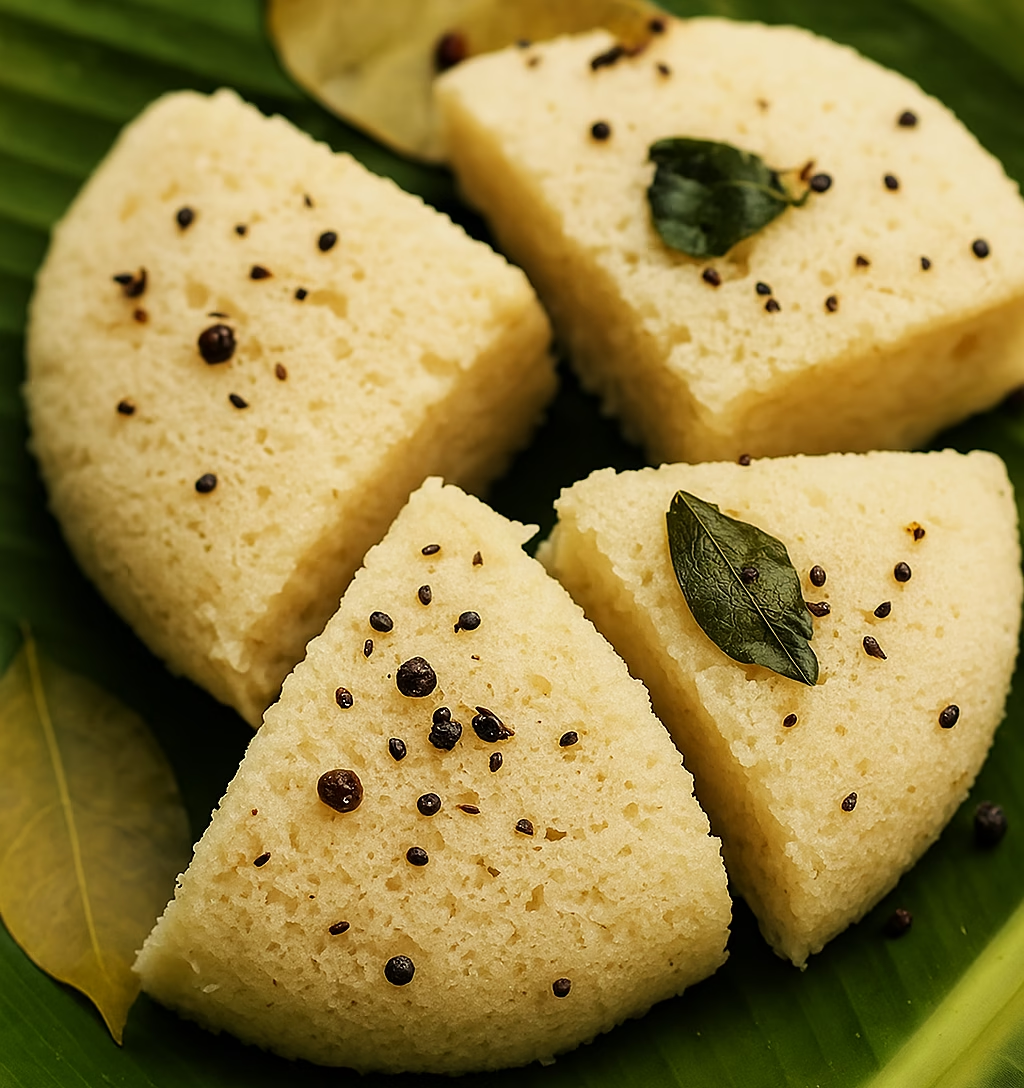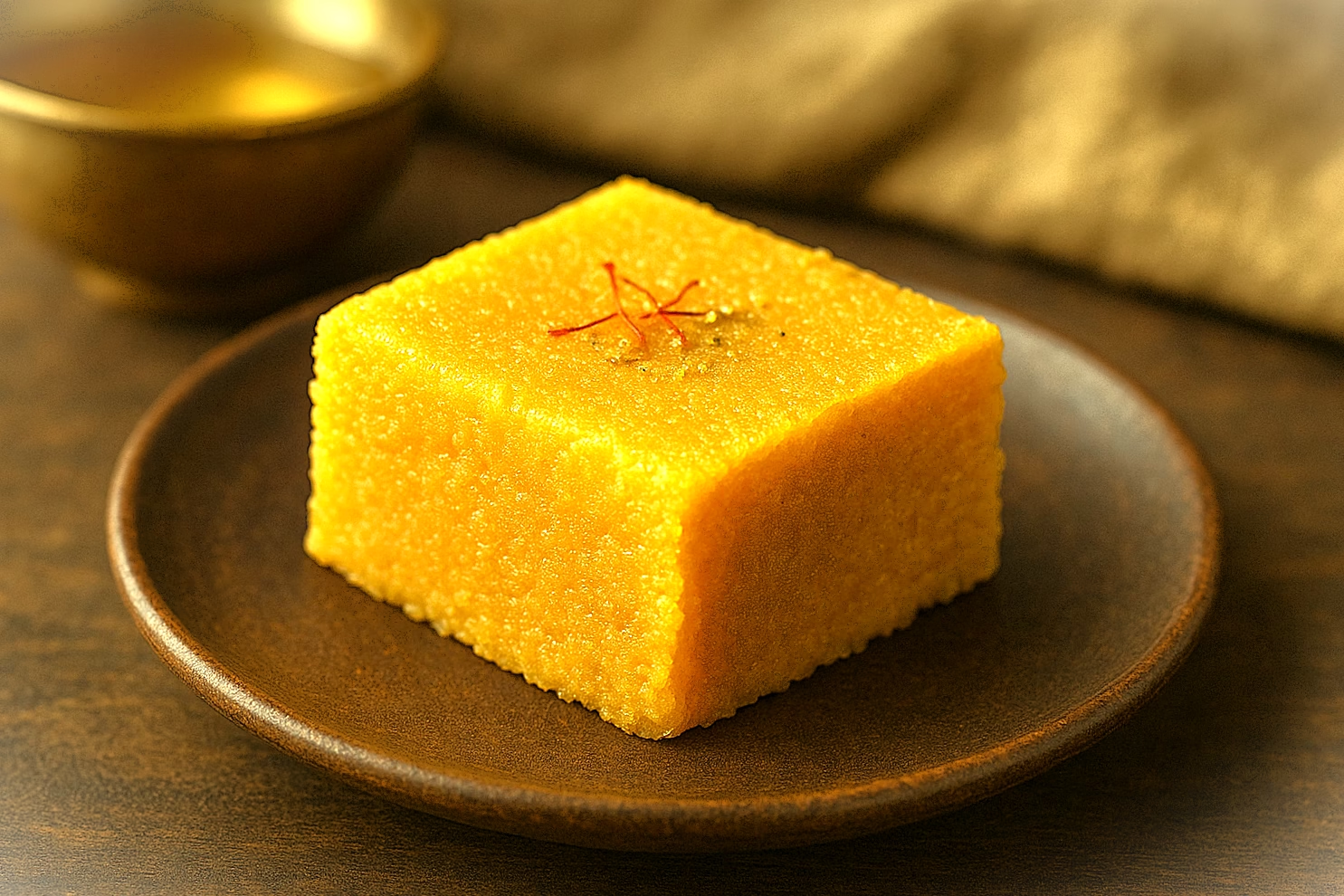Kanchipuram Idly
Description
A temple-style steamed idli made of rice, urad dal, ghee, pepper, cumin, and dry ginger is one such divine prasadam offered in the Varadharaja Perumal temple of Kanchipuram. It is usually steamed in mandharai leaves for fragrance and then offered to the deity.
Ingredients
For the Idli Batter
- Raw rice – 2 cups
- Idli rice – 1 cup
- Whole urad dal – 1 cup
- Fenugreek seeds – ½ tsp
- Salt – to taste
For Seasoning (Temple-style)
- Ghee – 3 tbsp
- Black pepper – 1 tsp (coarsely crushed)
- Cumin seeds – 1 tsp
- Dry ginger powder (chukku) – ¼ tsp
- Asafoetida (hing) – ¼ tsp
- Curry leaves – a few, chopped
- Cashew nuts – 1 tbsp (optional, not used in temple version)
- Mustard seeds – ½ tsp (optional in home version)
Preparation Steps
Soaking & Grinding
- Wash and soak both the rices together for 4–5 hours.
- Soak urad dal and fenugreek seeds separately for 3 hours.
- Grind urad dal into a fluffy batter.
- Then grind the rice into a slightly coarse batter, like rava texture.
- Mix both batters with salt, cover, and ferment overnight for 8–10 hours.
Tempering
- Heat the ghee in a small pan.
- Add pepper, cumin, dry ginger powder, hing, and curry leaves.
- Optional: add mustard seeds and cashews.
- Fry till aromatic, then allow cooling slightly.
Mixing
Add the seasoning to the fermented batter and mix well. The batter should be thick — thicker than normal idli batter.
Steaming
- Traditionally, this idli is steamed in mandharai leaves.
- If unavailable, use banana leaves or regular idli plates.
- Grease with ghee, pour the batter, and steam for 25–30 minutes or until firm.
Serving
Let cool for 5–10 minutes before slicing into thick pieces. Serve with Chidambaram Kathirikai Gothsu or Milagu Kuzhambu.
Temple-Style Tips
- No onions and garlic are used.
- Only ghee, pepper, cumin, and dry ginger for flavor.
- The batter naturally ferments without baking soda.
- Steamed in leaf cups or trays for that divine aroma.
This recipe is a home-style adaptation inspired by the Varadharaja Perumal Temple prasadam and traditional Tamil practices. The actual temple preparation might differ in ingredients, proportions, and methods followed by the priests. This content is provided for informational and cultural appreciation purposes only and is not an official temple recipe. All religious and culinary rights belong to the respective temple authorities and traditions of Kanchipuram.


